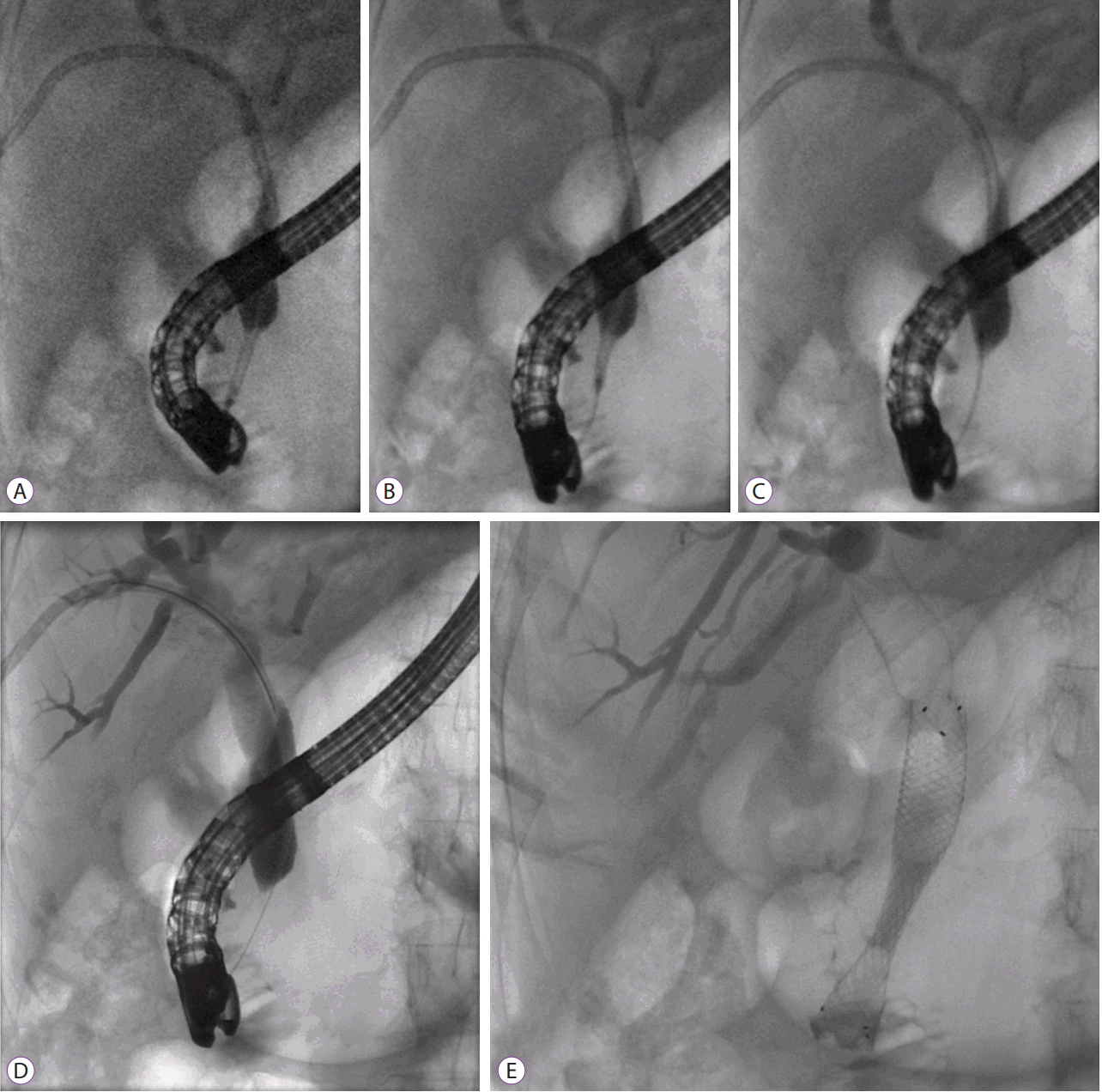Biliary rendezvous procedures typically imply over-the-wire cannulation after guidewire insertion via a percutaneous transhepatic biliary drainage (PTBD). Alternative techniques, such as the parallel cannulation method alongside the PTBD catheter have been reported [1]. More recently, other escape techniques that substitute guidewires for different interventional radiology (IR) catheters have been described, such as angiography Cobra 2 and Kumpe access catheter, with the aim at retrograde cannulation after establishing appropriate end-to-end contact [2,3]. However, these techniques require specialized IR accessories and/or competence. This report introduces another easy-to-perform variant technique for rendezvous procedures that resort to ubiquitously available endoscopy technology and minimal need for external (rendezvous) cooperation.
As the first step of the procedure, the indwelling 10-F internal-external PTBD drain is withdrawn under duodenoscopic control up to the papilla. Following this, the tip of a 5.5-F endoscopic retrograde cholangiopancreatography (ERCP) catheter, with a conical metal tip, is pushed into the orifice of the PTBD drain until achieving proper alignment. Subsequently, the common bile duct stricture is traversed in a piggyback fashion using coordinated pull (PTBD) and push (ERCP catheter) maneuvers. After releasing the end-to-end contact, the PTBD is withdrawn into the intrahepatic biliary system (provisionally left in place until the procedure is finished). In the elderly, frail patient depicted in the figure and video, after cannulation of the route with guidewire insertion, a 10- Ć 60-mm transpapillary biliary metal stent was placed for definitive palliative treatment and the PTBD was removed (Fig. 1, Supplementary Video 1).
The potential benefits of the presented āpiggyback rendezvous cannulationā technique include minimal need for percutaneous cooperation, thus obviating the need for a second endoscopist with specialized training and/or IR cooperation. Given the predominant endoscopic part of the rendezvous with minimal PTBD manipulation, other potential benefits may be discussed, such as reduced patient and staff radiation exposure, and time and equipment consumptions.








